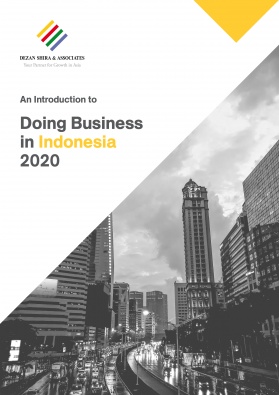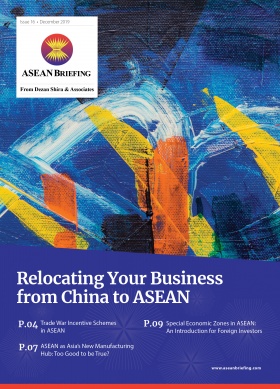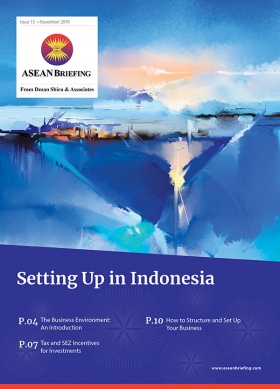Indonesia’s Textile and Garment Industry: Opportunities for Foreign Investors
- Indonesia’s textile and garment industry presents new growth opportunities for foreign investors.
- The country’s textile and garment exports were valued at US$13.8 billion in 2019, and the government is aiming to propel this industry into the top five largest in the world.
- To achieve this, the sector needs investments in new technology and machinery as well as human capital development.
- Foreign investors that can facilitate this transformation can take advantage in establishing new export markets and increasing the competitiveness of Indonesian textile products.
Indonesia’s textile and garment industry enjoyed positive growth throughout 2019 with exports valued at US$13.8 billion, an increase from US$10 billion in 2018 and making the country one of the largest textile producers in the world.
Despite this upward trajectory, the industry has been severely impacted by the US-China trade war, and now, the COVID-19 outbreak. Vietnam, although also affected by the trade war, still recorded some US$35 billion in textile exports in 2019.
Currently, 30 percent of Indonesia’s total production is to meet domestic demand with the remainder for exports to mainly the US (36 percent), Middle East (23 percent), EU (13 percent), and China (5 percent). These are dominated by large manufacturers producing for global apparel brands. Before the onset of the virus, the Indonesian Textile Association (API) stated that the country’s textile and garment industry is expected to grow at a compound annual growth rate (CAGR) of 5 percent.The government, through its Industry 4.0 Masterplan, aims to propel the country into the top five largest textile producers in the world by 2030. This presents unique opportunities for foreign investors to enter and assist in this revitalization program, in particular, supply expertise on sophisticated production techniques.
Constraints remain
Internal constraints still plague Indonesia’s textile industry and have hindered its export potential. Electricity and gas prices are high compared to other textile producing countries, which has reduced Indonesia’s competitivity in the international market.
Labor costs have also increased annually; the minimum wage in Indonesia has been increased by 8.5 percent for 2020. The country’s minimum wage is also fixed based on the sector. ‘Leading sectors or industries’ in a province, like textiles and garment manufacturing, can determine their own minimum wage rate, also known as UMSP. The UMSP must be higher than the provincial minimum wage (usually by 5 percent and above).
Another issue has been ageing machinery, which results in overall lower productivity and efficiency for the country. This undermines one of the sector’s key strengths – the presence of both an upstream and downstream industry – although only the largest players can afford to invest in new plants and machinery to complement these operations.
Furthermore, increasing regional integration has resulted in an influx of cheaper textile products into Indonesia (legal and illegally), especially from China, which has placed pressure on smaller domestic manufacturers. For many smaller, local companies, turning to the production of ‘Batik’ has been a way to distinguish themselves, but this is a very niche market in the global textile industry.
Batik is a centuries-old technique of using wax and dye to decorate cloth and garments developed in Indonesia. The artform has been designated as an Indonesian cultural contribution to the world by UNESCO, with many manufacturers still utilizing hand-drawn designs. An increasing number of manufacturers are moving away from the manual technique and using modern machinery to produce printed Batik.External constraints include the depreciating Rupiah, which has increased production costs. This is because raw materials, such as cotton, are bought with US dollars from the US, Brazil, and Australia – amounting between US$300 to US$600 million per year – and impacting the profitability of companies that cater to the domestic market. Larger companies with the capacity to export their products are benefiting from the stronger dollar as it increases their revenues.
Opportunities for foreign investors and industry diversification
Despite the aforementioned challenges, the overhaul of this lucrative industry requires local companies to access much-needed funding.
Foreign investors with the expertise to facilitate more value-added production techniques are in high demand. Further, as international competition becomes fiercer, textile companies that lack the capital to compete could be takeover targets through partnerships, joint ventures, and private equity investment.
The Indonesian government is looking to enhance its support for the textile industry. The current administration has improved the country’s logistics by building new highways and ports. It is also curbing the import of illegal textiles and tightening import rules for textiles and textile products.
More vocational institutions catering to the sector are being developed in cooperation with local companies, aiming to produce skilled human capital who can use the latest technology in production, such as 3D printing.
Industry players must also diversify their export market – considering that its biggest market, the US, could impose tariffs on a variety of Indonesian products, including textiles at any time.
New potential international markets could include Australia – both countries ratified the IA-CEPA trade agreement in February 2020 – as well as New Zealand, South Korea, and Japan.
Additionally, Indonesia’s Muslim fashionwear is finding an increasing market in the Middle East and North Africa as the region now represents more than half of the country’s overseas missions and trade negotiations.
About Us
ASEAN Briefing is produced by Dezan Shira & Associates. The firm assists foreign investors throughout Asia and maintains offices throughout ASEAN, including in Singapore, Hanoi, Ho Chi Minh City and Jakarta. Please contact us at asia@dezshira.com or visit our website at www.dezshira.com








